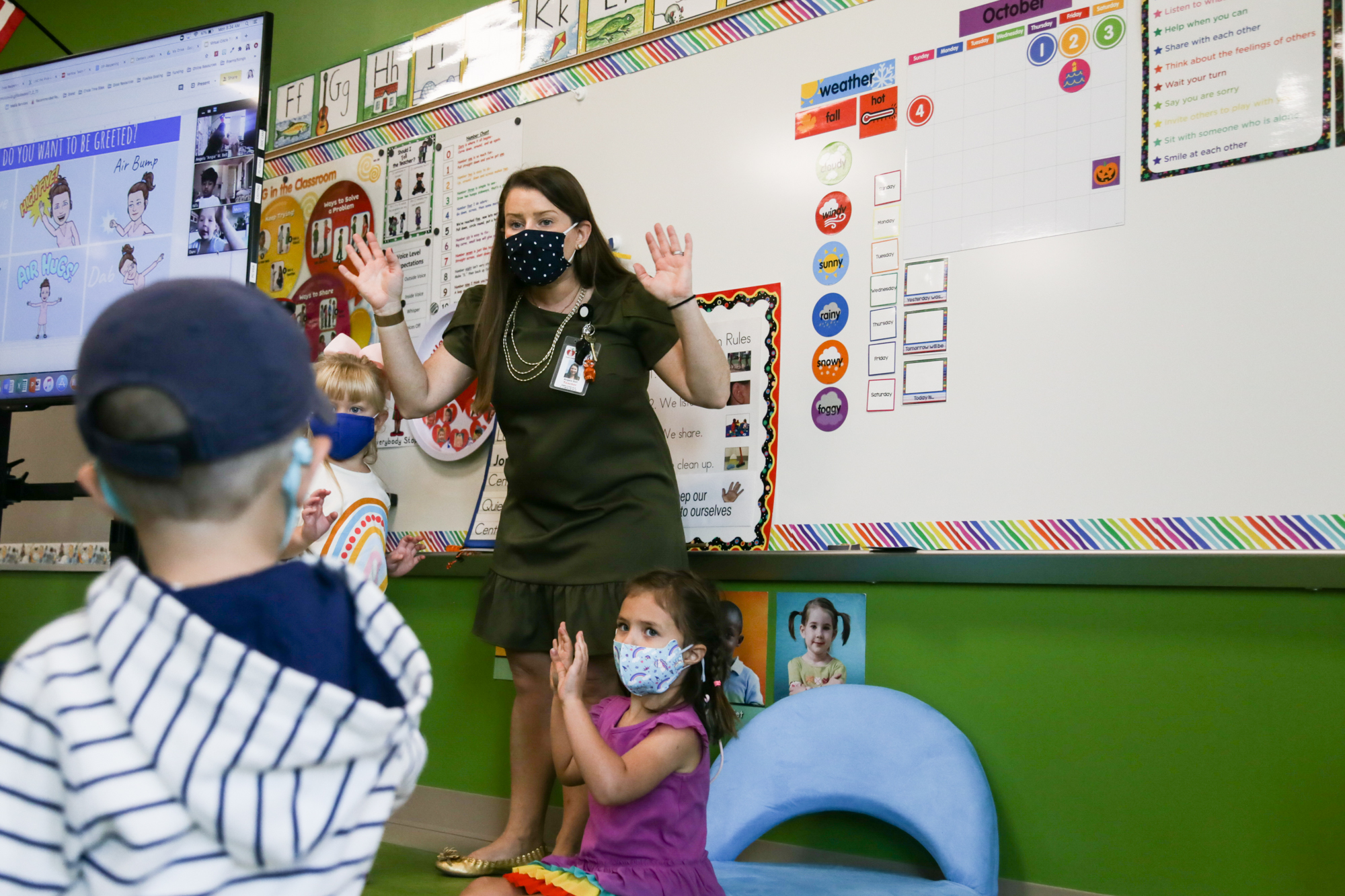How the Two-Year Pandemic Not Only Heightened Existing Issues in Education But Conjured Up New Ones
April 7, 2022
Austin, TX – “I haven’t had a normal year because my first year was when covid started and then we’ve just continued on.”
Kim, whose name is changed due to the fact she is still on a probationary contract with her school, teaches fourth grade in the North Texas area. She taught preschool while getting her degree, and when she finally got into an elementary school classroom, she and her students were sent home.
“I was so excited to get in the classroom. I think I still had that excitement, even though we went home for those last few months,” Kim said. “We’ll come back in August. And it’ll be fine, but that wasn’t what happened.”

In April 2020, 99.6 percent of adults with children under the age of 18 enrolled in school reported their children’s classes were affected by the pandemic. Schools in Texas gradually started re-opening in late 2020. Today, most are operating in-person while some still have hybrid options.
The pandemic created obstacles teachers are still facing today. Educators noted these issues include burnout and general stress, student behavioral issues, low pay and unfilled positions causing extra work for remaining staff.
The teacher attrition rate, or the rate at which employees leave the field, in Texas hit a staggering 11.57 percent during the 2021-22 academic year. Substitute teachers are also in short supply, causing stress and an extra workload for present teachers.
“It just makes it hard because you don’t know if they’re going to show up,” Kim said. “Not only is there a shortage, a lot of times they’ll cancel last minute and so then you’re shuffling trying to figure out what to do.”

The Texas Education Agency (TEA) launched the Teacher Vacancy Task Force earlier this month at the request of Gov. Greg Abbott. He cited the “ongoing and increasing shortage of full-time and substitute teachers” as the main reason behind the appointment of this task force.
The group originally comprised 28 members; only two of which were teachers. A little over a week after the task force was initiated, 24 public school teachers were added.
Teacher retention and shortage was a growing problem before the pandemic, but the two years of lockdown and conflicting policies regarding public school operations exacerbated existing issues surrounding the field of education and brought new ones to light.
Christopher P. Brown, a professor at The University of Texas at Austin in the Department of Educational Policy and Leadership and a former public school teacher, said that in order to bring in more teachers and create a higher retention rate, our society needs to rethink why educators leave in the first place.
“Good teaching takes time,” Brown said. “A lot of research shows it takes up to anywhere from five to seven years to become an expert teacher, but unfortunately, most teachers are gone by that time.”

A 2018 research study concluded that over 44 percent of new teachers leave the field within five years of entry. Of those departed educators, almost 45 percent cite the reason for leaving as “dissatisfaction” regarding the school or working conditions.
“There’s no one quick fix,” Brown said. “I think it’s a rethinking of what it means to be a teacher and how we can support them to be successful in the classroom.”
Austin Independent School District reported a loss of 1,254 teachers from March 2021 to February 2022 due to retirement and resignation. Eduardo Villa, a media relations specialist at AISD, said they are increasing monetary incentives to encourage greater teacher retention.
The proposed pay increases for 2022-23 academic year include: a two percent increase of the midpoint of teacher’s pay scale and a $1,000 base pay increase.
AISD is also trying to bring in new teachers to the district to help alleviate the current workload.
“We’re attending universities, industry job fairs, virtual recruitment events,” Villa said. “We’re working with partners and pipeline opportunities to make sure we’re bringing teachers and amazing talent to serve our students.”


Fabiola Posadas Bilingual Pre-K3 class at Uphaus Early Childhood Center on Tuesday, May 18, 2021.
Even with some districts making more efforts to support teachers, 55 percent of educators say they are more likely to leave or retire from the field sooner than planned due to the pandemic, according to a survey of the National Education Association members.
Kim said at one point she questioned whether or not she was coming back for the next school year. She ultimately chose to continue, citing the reason being her students.
“There are some days where I’m like, ‘Wow, retirement is a really long way away.’ I’m only three years in,” Kim said. “But at the end of the day, I think this is what I’m meant to do.”
*All photographs courtesy of AISD Media Relations

